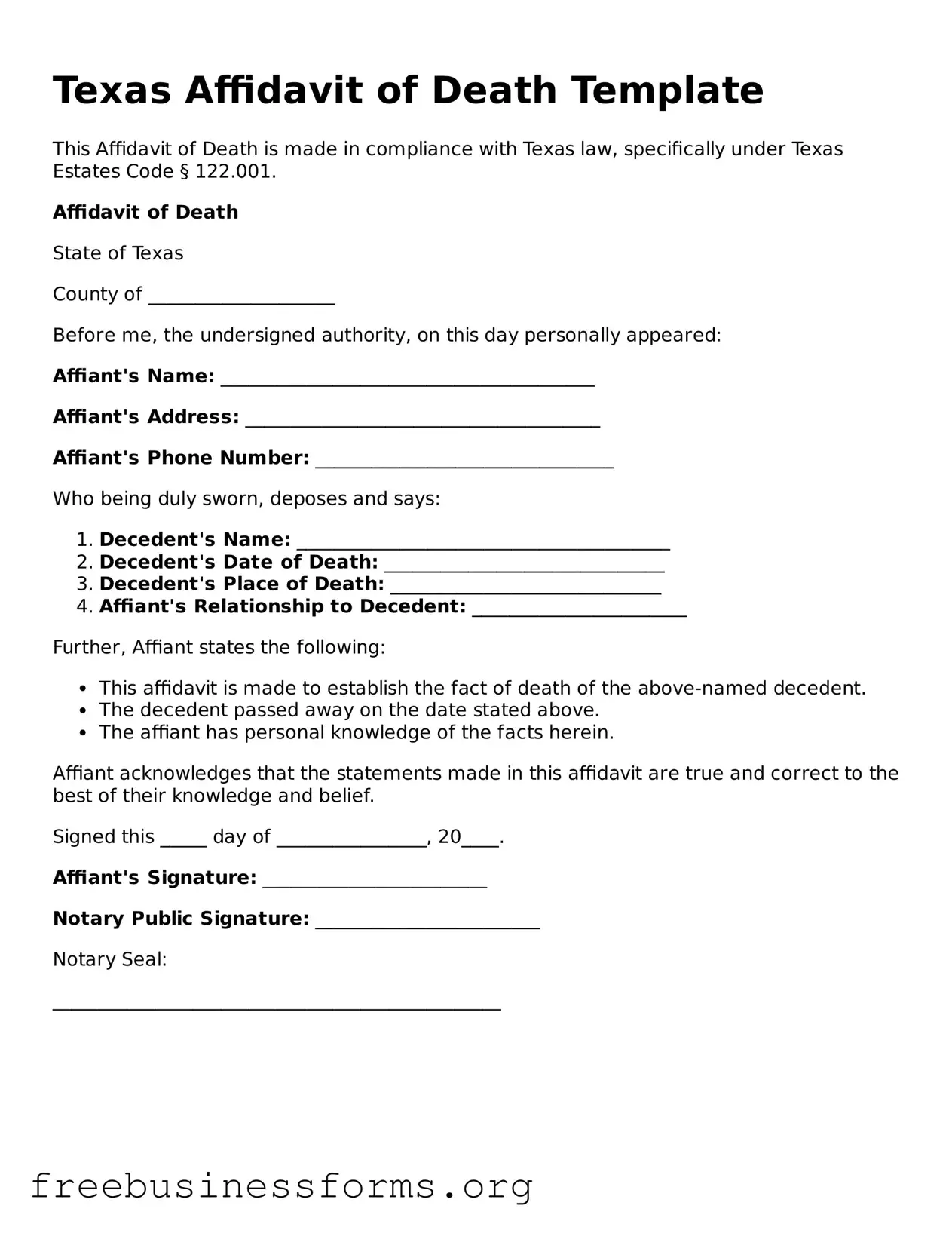Texas Affidavit of Death Template
This Affidavit of Death is made in compliance with Texas law, specifically under Texas Estates Code § 122.001.
Affidavit of Death
State of Texas
County of ____________________
Before me, the undersigned authority, on this day personally appeared:
Affiant's Name: ________________________________________
Affiant's Address: ______________________________________
Affiant's Phone Number: ________________________________
Who being duly sworn, deposes and says:
- Decedent's Name: ________________________________________
- Decedent's Date of Death: ______________________________
- Decedent's Place of Death: _____________________________
- Affiant's Relationship to Decedent: _______________________
Further, Affiant states the following:
- This affidavit is made to establish the fact of death of the above-named decedent.
- The decedent passed away on the date stated above.
- The affiant has personal knowledge of the facts herein.
Affiant acknowledges that the statements made in this affidavit are true and correct to the best of their knowledge and belief.
Signed this _____ day of ________________, 20____.
Affiant's Signature: ________________________
Notary Public Signature: ________________________
Notary Seal:
________________________________________________
